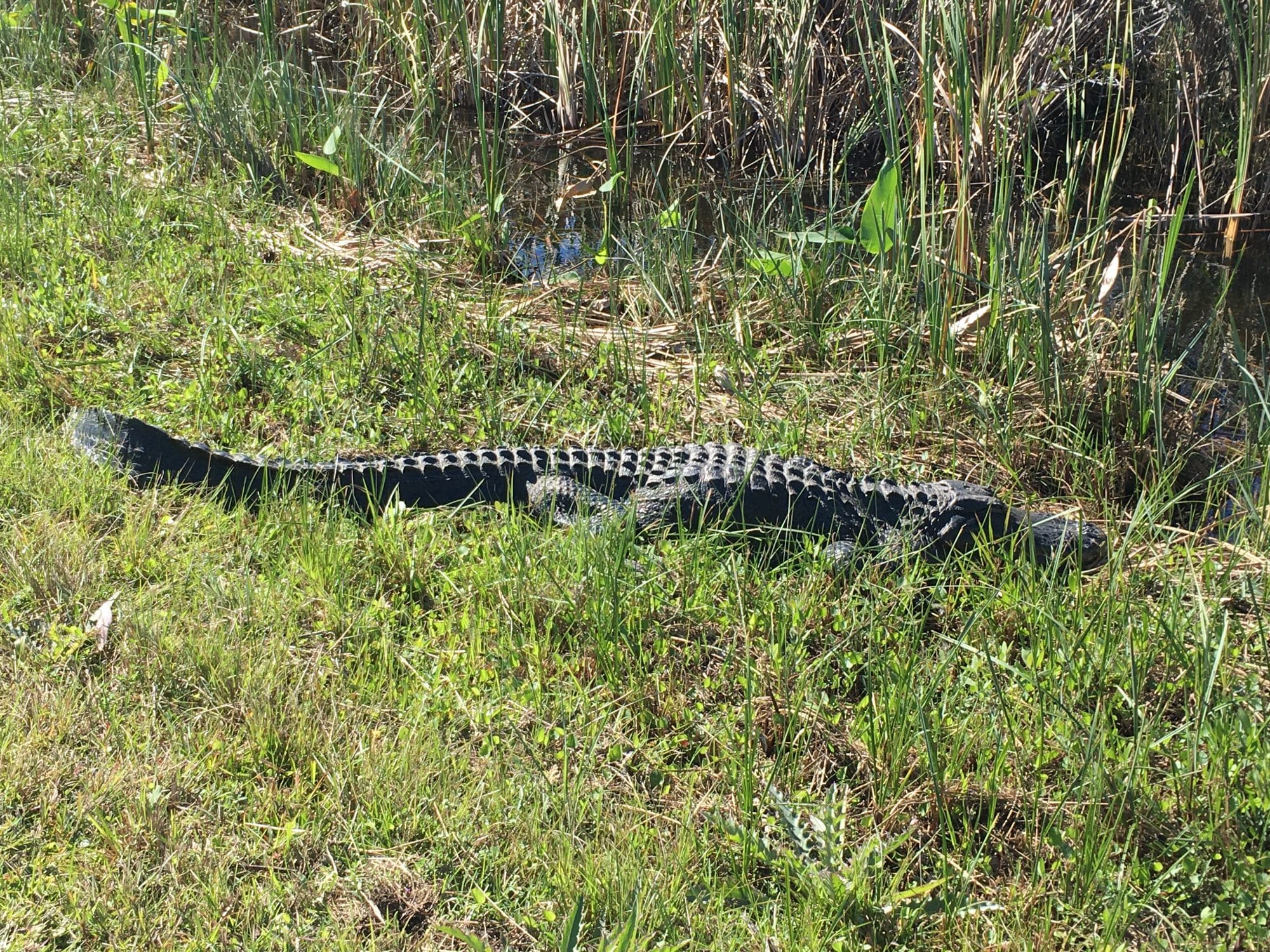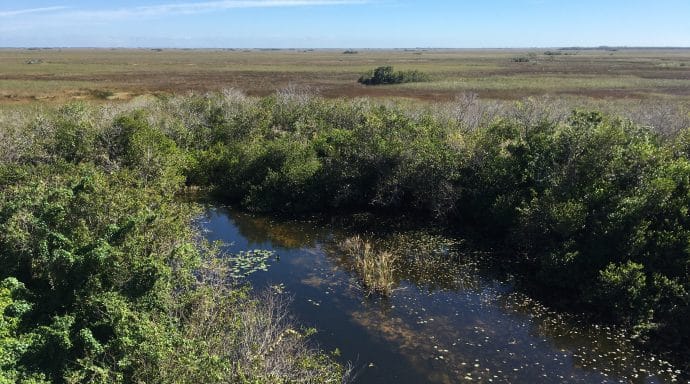
Spanning 1.5 million acres of specially protected wetlands, Everglades National Park is a perfect day trip from Miami, Fort Lauderdale or Naples, Florida and a great family-friendly activitiy everyone will enjoy. The Everglades is the largest subtropical wilderness in the United States and its 4 separate entrances (in two counties) each lead to a completely different area of the park.
We visited the park’s Shark Valley entrance in January, when the weather was cool and there were blue skies. Thanks to the Every Kid Outdoors initiative, our family got in for free. We brought our bikes, but you could also rent bikes at the visitors center or take a tram ride along the 15-mile paved bike path loop. For more information on tram tours and bike rentals visit https://www.sharkvalleytramtours.com/.
We picked up our Junior Ranger books at the visitor center and did a few of the activities that were located there. Then we set off on our bikes. Despite the crowded parking lot, the park is so big that we never felt crowded inside the park. The paved path was wide and easy for everyone to navigate and gave us a great opportunity to view the unique plants and animals that call the Everglades home. We stopped along the way to look at the alligators and birds and take lots of water breaks.
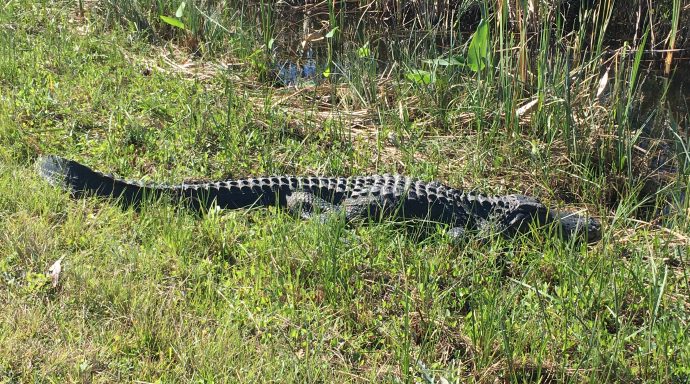
Don’t be surprised to find that your path has been blocked by a lounging alligator or crocodile, especially on a sunny day. Make sure to keep your eyes out for cranes and alligators or crocodiles laying in the water and grasses alongside the path – it’s easy to pass by them without even noticing!
The path takes you 7 miles out into the Everglades. When we arrived at the end we parked our bikes and walked up the winding path to the top of a 65-foot observation tower where we had a birds-eye view of the sea of grass that makes up the Everglades.
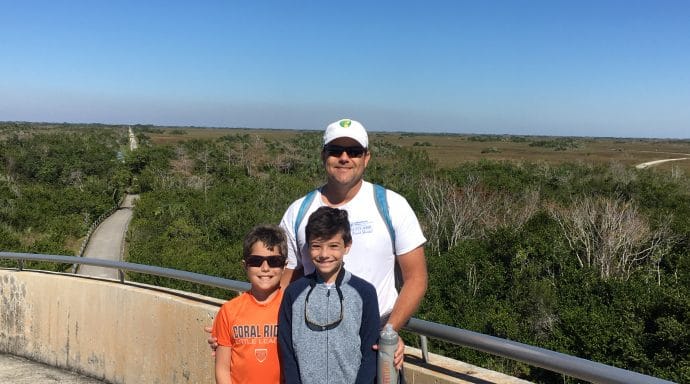
Everglades National Park is the habitat for many rare and endangered species including the manatee, American crocodile and the Florida panther. It is also a critical resource for clean water for the residents of South Florida. From the top of the tower it was easy to see why this is a World Heritage Site and an International Biosphere Reserve, a Wetland of International Importance, and a specially protected area under the Cartagena Treaty.
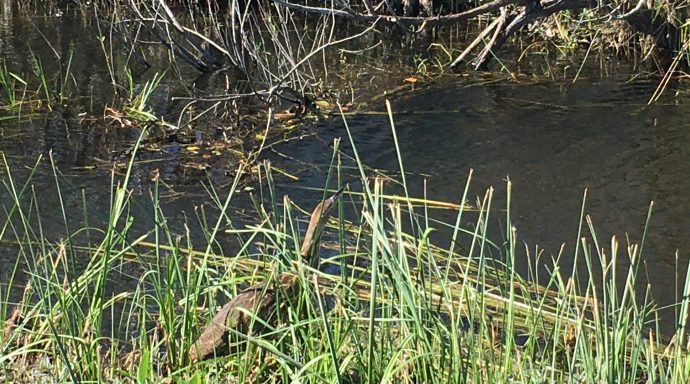
We had packed lunches, so we found an area to picnic near the tower and complete the rest of the Junior Ranger books before starting our return trip.
The boys enjoyed the freedom of riding their bikes and we loved the serenity that the park provided. It was so peaceful and we all enjoyed searching for the wildlife along the way. It was a little tough coming back for our 4th grader – biking 15 miles is far when you’re on a small bike with little wheels, so allow extra time for breaks.
When we got back to the visitors center the boys picked up their Junior Ranger badges before we headed home. It was a great way to spend a cool Florida day!
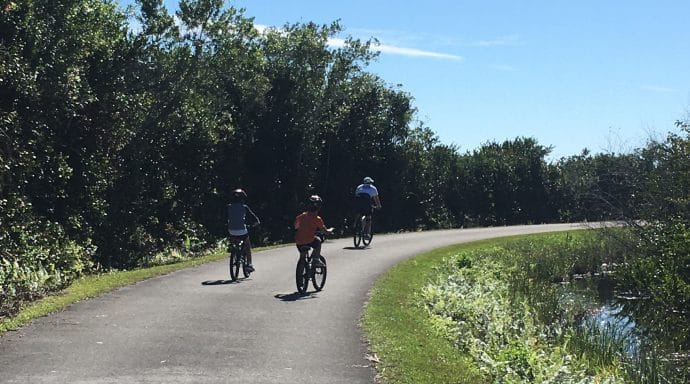
Things to Know Before You Go:
This is an out and back trail. If you bike out, you have to bike back. There is no alternative, so be sure your kids are up for the full 15-mile ride. One path (the one on the right) is a mostly straight 7 mile path. The other one is a more windy 8 mile path. You can go either way and you can return on the same path you took out.
South Florida has two seasons – the rainy season and the dry season. April to October is traditionally the rainy season. If you go then, be prepared with rain gear, but also be aware that there will be more mosquitos during this time. November to March is the dry season and brings a more temperate climate, especially for biking.
Be sure to pack waters and snacks, especially if you’re biking the 15-mile loop and bring sunscreen and insect repellant if you’re there during the rainy season.
Also, as with most National Parks, there is limited cell coverage in the park, so make sure your group doesn’t get too spread out or have a plan on where you’ll meet up.

